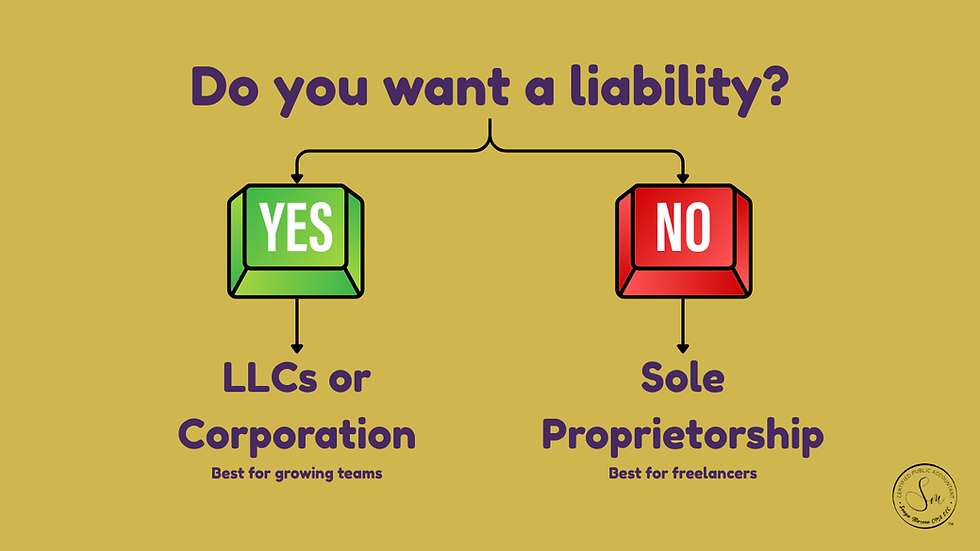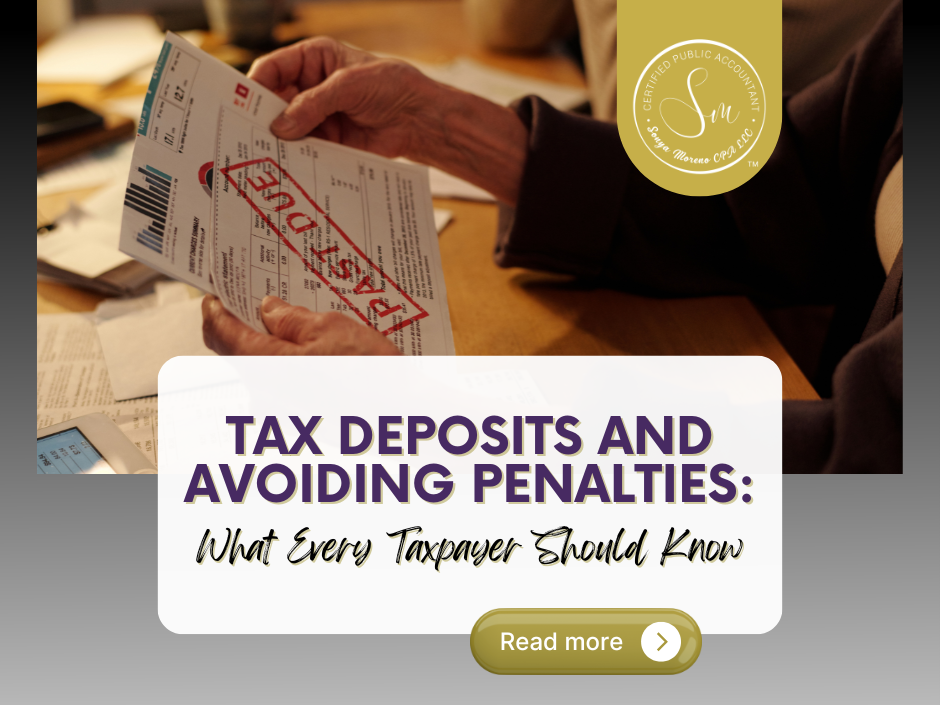Entity Selection: The Business Structure That Could Save (or Cost) You Thousands
- sonya9686
- Aug 29
- 3 min read
Choosing the right business structure isn’t just a legal checkbox — it’s a financial strategy that could save you thousands of dollars each year. Your entity determines how you’re taxed, how protected you are from lawsuits, and how scalable your business can become.
At Sonya Moreno, CPA LLC, we help business owners align their structure with their goals.
Here’s what you need to know before locking in (or revisiting) your business entity.
Prefer to watch instead?
I also cover the basics of choosing the right business entity in my YouTube video — explaining the pros and cons of Sole Proprietorships, LLCs, S-Corps, and Corporations, so you can understand which structure best supports your goals.
The Big Five Business Entities
1. Sole Proprietorship The simplest to start, but the riskiest. Your personal and business finances are one and the same, meaning your personal assets are on the line if anything goes wrong.
2. Partnership Like a sole proprietorship but with more people. Unless you set up a Limited Partnership (LP) or Limited Liability Partnership (LLP), you’re personally liable — and responsible for your partner’s mistakes too.
3. Limited Liability Company (LLC) One of the most flexible and protective options. An LLC separates your personal assets from the business and lets you choose how you’re taxed — like a sole prop, partnership, S corp, or even a C corp.
4. S Corporation (S Corp) This isn’t a separate legal entity but a tax election. With an S corp, you can pay yourself a reasonable salary and take remaining profits as distributions — which aren’t subject to self-employment tax. Once you’re making $40K–$50K+ in net income, this election can be a game-changer.
5. C Corporation (C Corp) A fully separate legal entity. While there’s “double taxation” (corporate and dividends), C corps provide benefits like fringe benefit deductions, retained earnings planning, stock options, and easier access to investors or capital.
How Entity Choice Affects Your Tax Bill
Sole Props & Partnerships: All profit is taxed as personal income, plus self-employment tax. No shelter.
LLCs: Default taxation mimics sole props or partnerships, but with the option to elect S corp status.Example: If your business nets $100K and you elect S corp status — you might pay yourself $50K in salary and take $50K as a distribution. That distribution avoids self-employment tax, saving you over $7,000.
C Corps: Flat 21% tax rate, plus dividends tax. But you can retain earnings in the company, deduct benefits, and even structure for long-term capital gains (via Qualified Small Business Stock).
Beyond Taxes: Operational Strategy
Entity choice isn’t only about taxes — it shapes how you run your business.
Multiple Ventures? Use LLCs under a parent company to separate risk and streamline finances.
Hiring Family? Pay kids or spouses legitimately, lowering taxable income while building their retirement accounts.
Long-Term C Corp Strategy: Retain profits, fund benefits, and reinvest into growth.

When to Reevaluate Your Entity
Your structure isn’t forever. Revisit it when:
Your net profit consistently exceeds $40K–$50K
You begin hiring
You purchase property or equipment
You’re planning for investors, succession, or sale
You form new partnerships or ventures
💡 Pro Tip: Don’t wait until tax season. Review your entity choice by Q3 or Q4 so you can adjust before deadlines hit.
Takeaway
Your entity is more than a legal formality — it’s a strategy that protects assets, reduces taxes, and unlocks growth. The right structure gives you leverage. The wrong one costs you money, time, and peace of mind.
👉 Haven’t reviewed your entity in the last year? Now’s the time. A 30-minute consultation could save you thousands and set your business up for smarter growth.





Comments